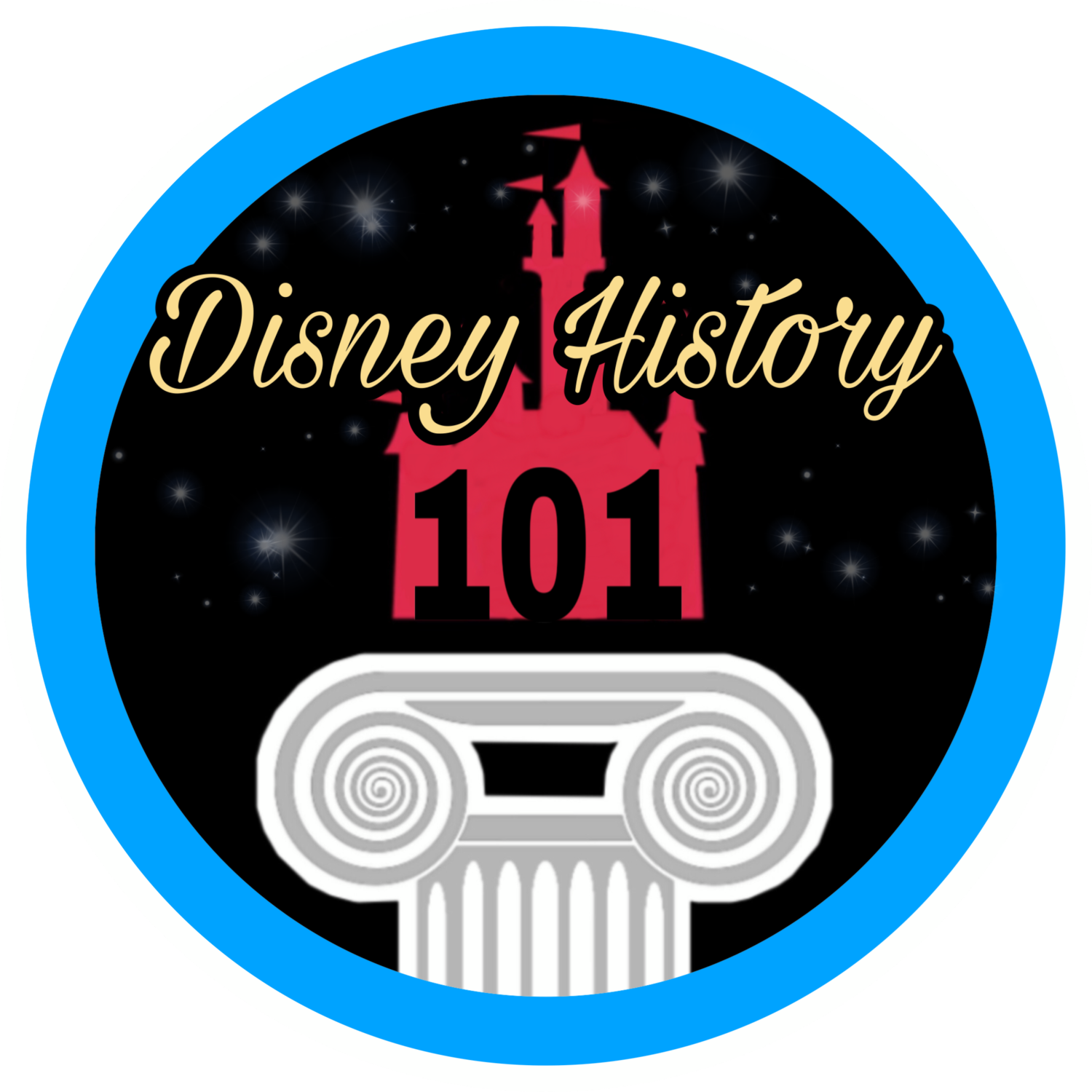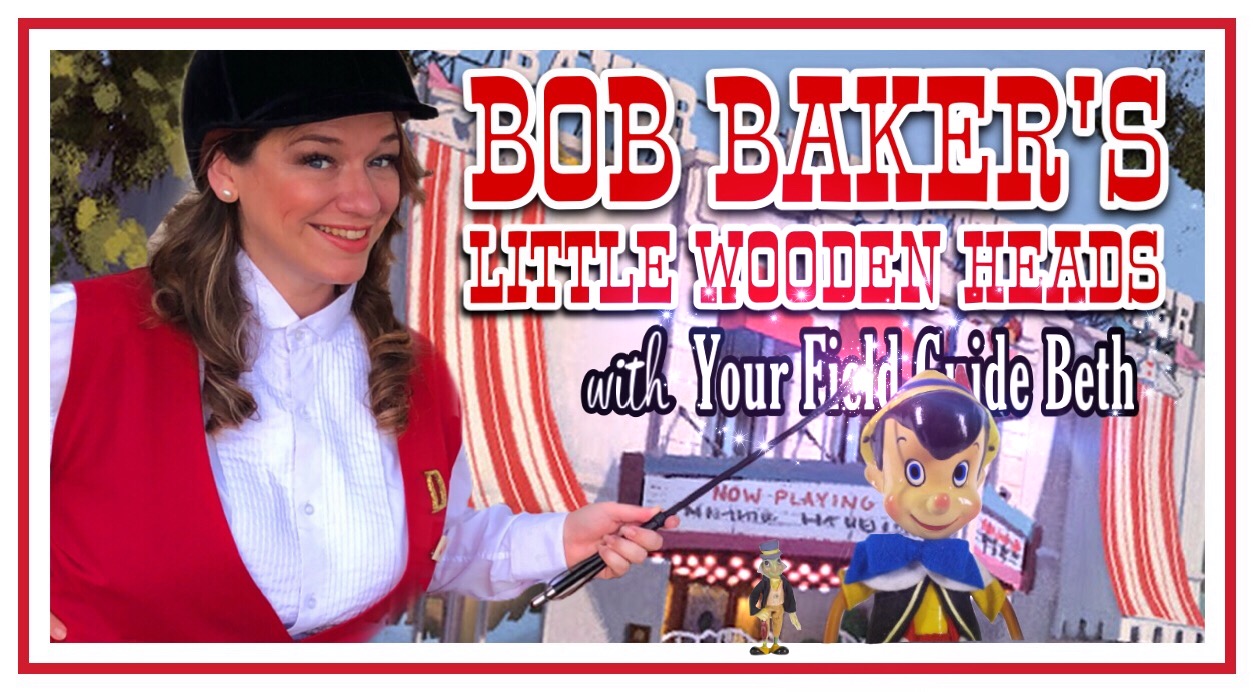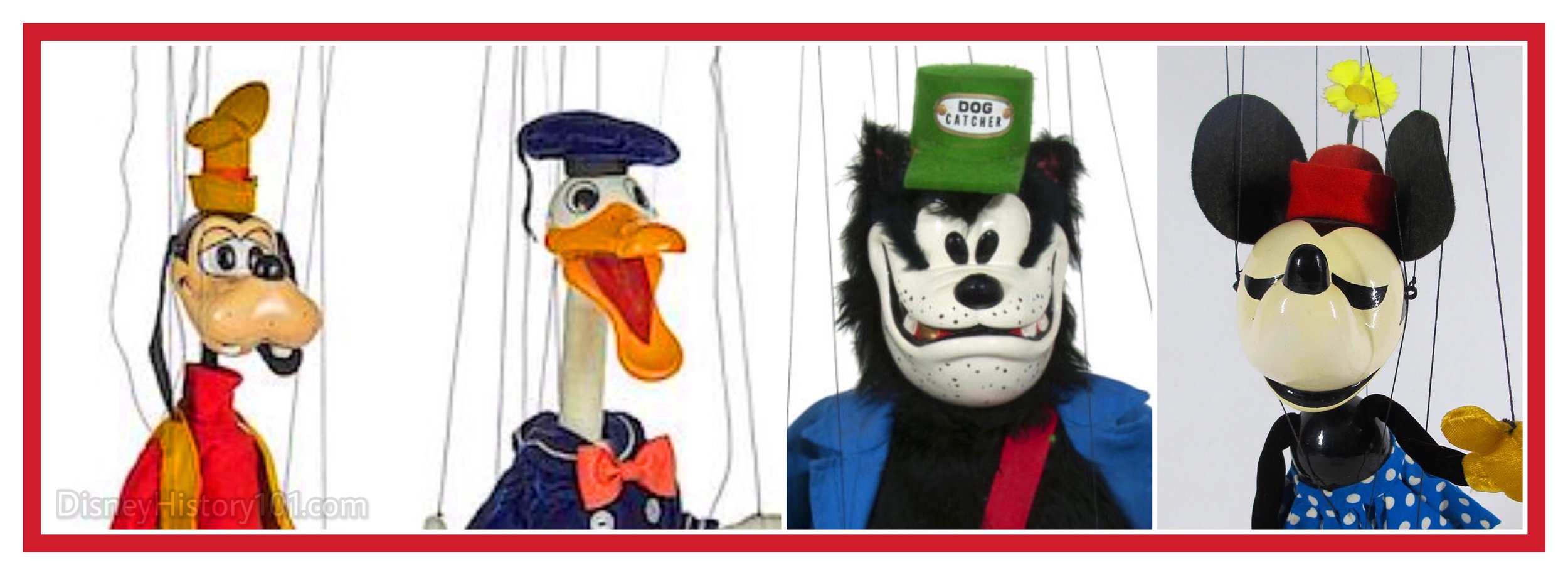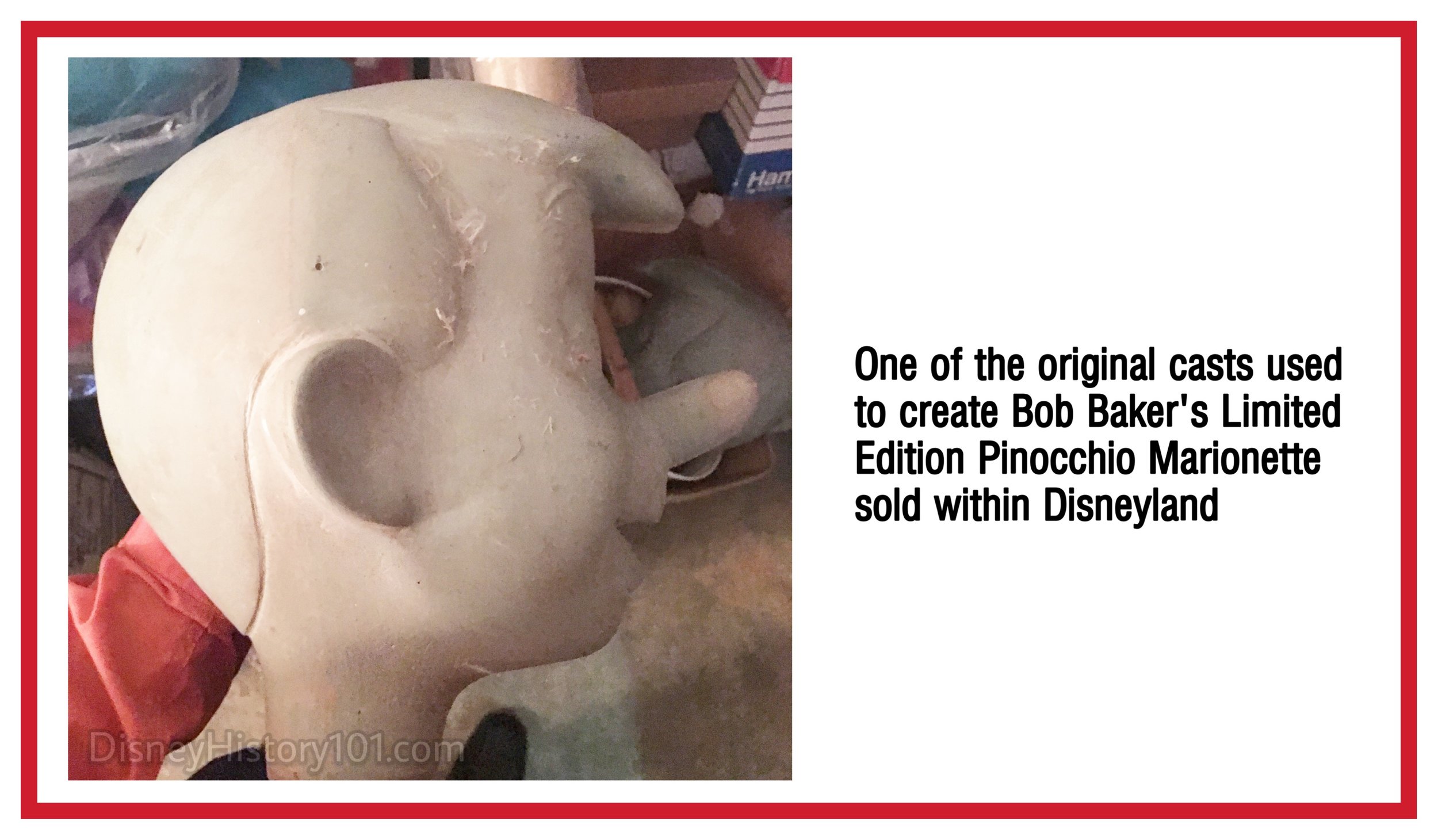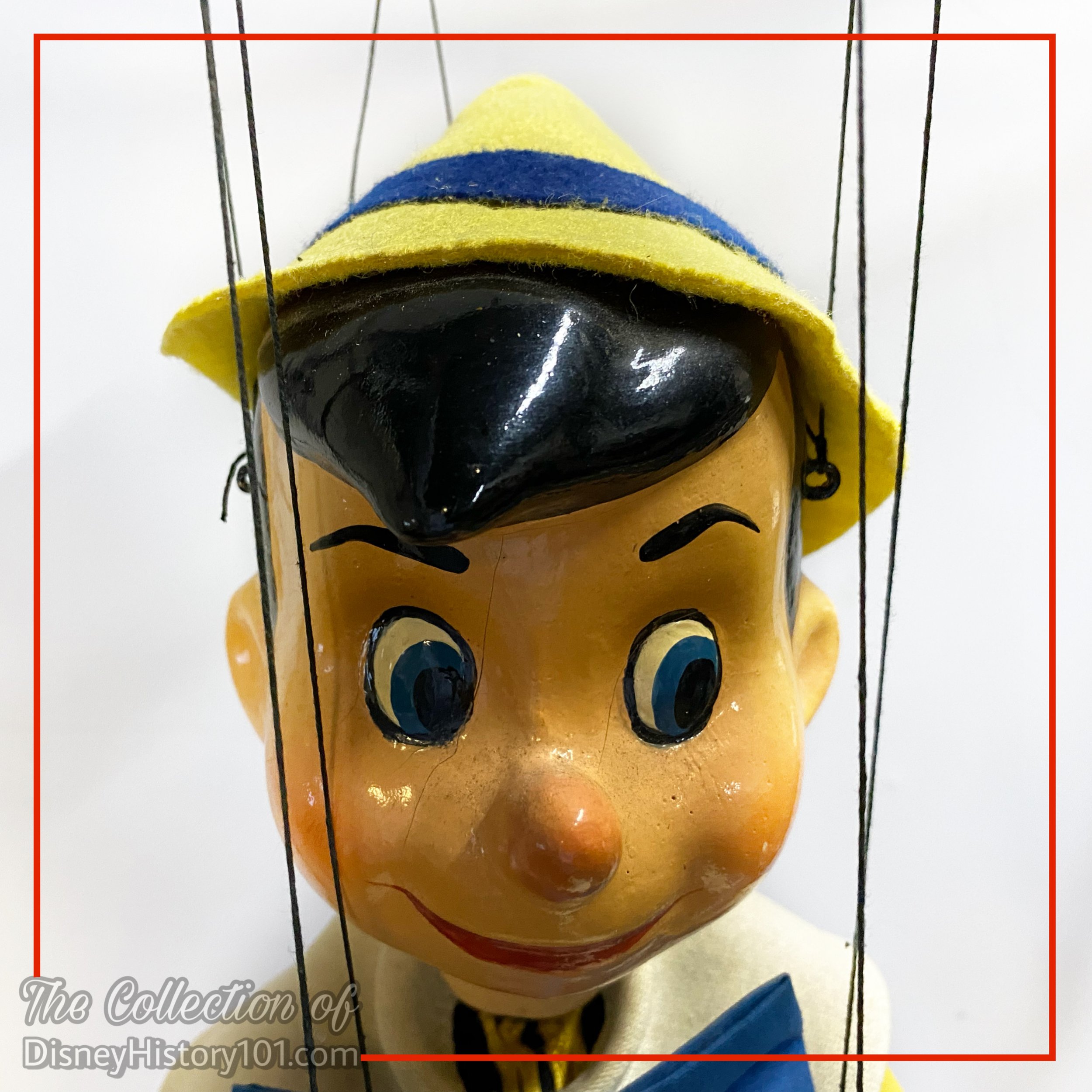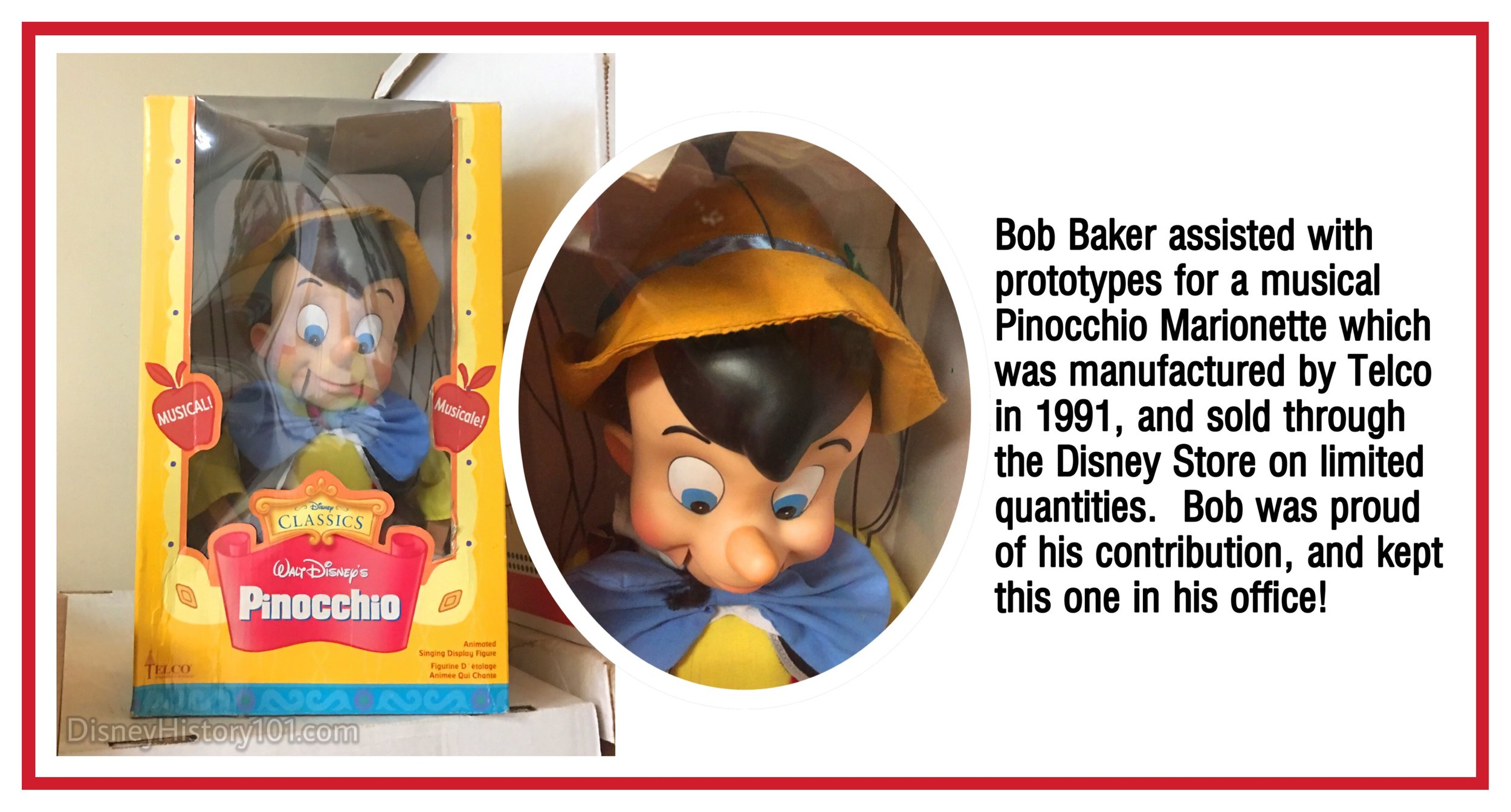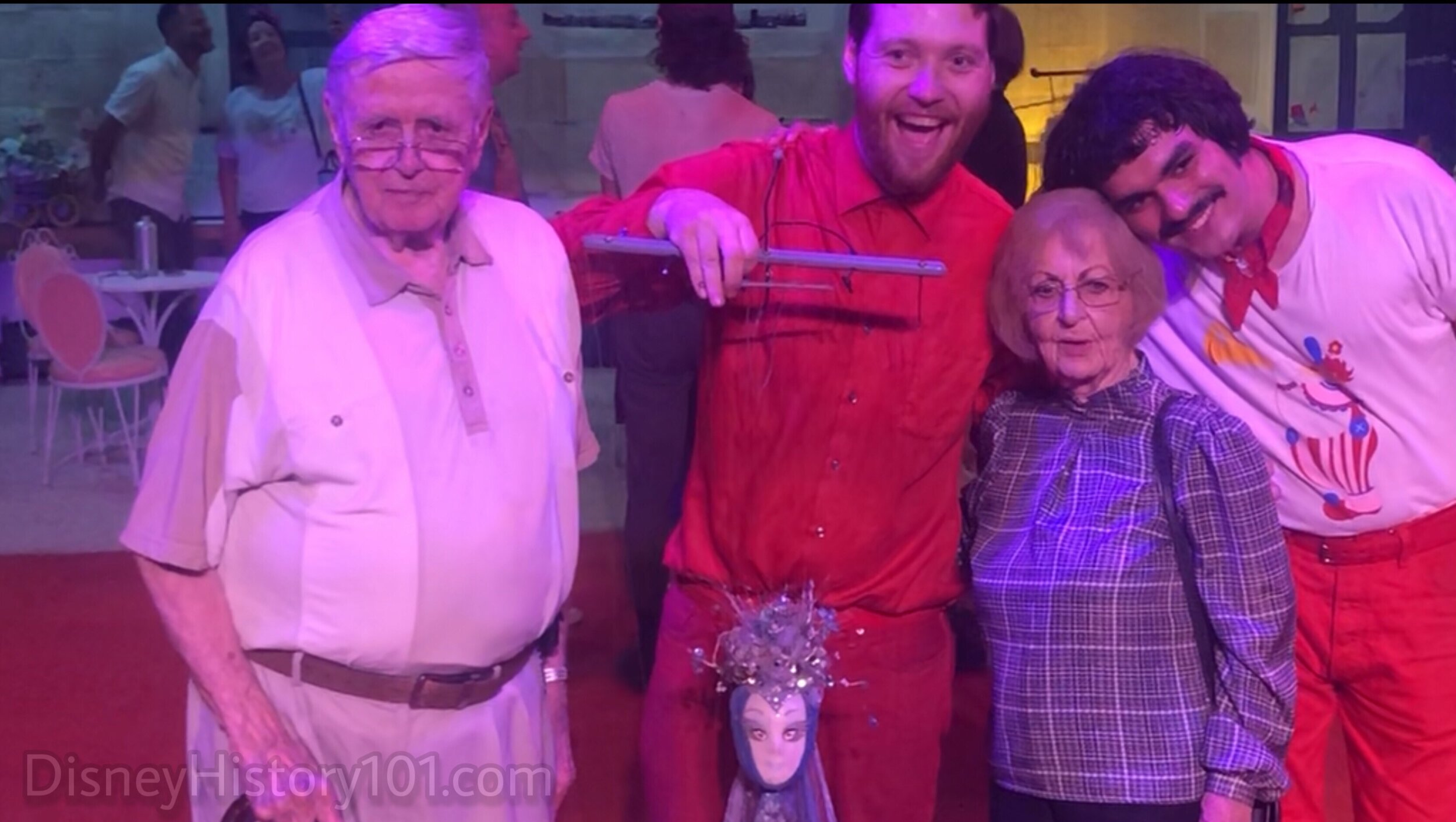“Little wooden head, go play your part, being a little joy to every heart. Little do you know, and yet it's true - that I'm mighty proud of you!” - Geppetto; Walt Disney’s Pinocchio, 1940.
“When you go to the theater, you pay admission and watch a show, with nothing but a piece of paper in your hand. But you take home… the illusion, the fantasy, the love, the drama, the music - and you’ll always have it.” These words were spoken by the founder of the Bob Baker Marionette Theater, who desired to impart such permanent gifts to his guests through a cast of living characters! These fundamental principles of theater operation shaped every production, prop, and puppet that Bob produced over the course of his life, and continue to guide those who carry his legacy today! Today, we journey to Downtown Los Angeles to examine this true-life “Geppetto” and founder of what is perhaps the longest running marionette theater in the United States. We will also examine how Bob’s path became intertwined with Walt’s, serendipitously allowing him the opportunity to make valuable contributions toward memorable Walt Disney Productions feature - length films. We will also learn how Bob assisted in the development of some Walt Disney character licensed products, and even helped adorn Walt Disney’s Disneyland with a little marionette “magic” of his own. Finally, we will explore how (after Walt’s passing), Bob would help carry on his legacy by continuing to work for Walt Disney Studios and the Walt Disney Company as an adviser for special projects.
Just how did this life-long affiliation with Walt Disney’s work begin? It may surprise you to learn that Bob’s association with the Disney “brand” actually started during the 1930s with the rise of Mickey Mouse’s internationally growing fame. By that time, Marionettes (manufactured by the Alexander Doll Company) had been released of Walt Disney’s immortal characters. These included Mickey Mouse, Minnie Mouse, Pluto, Donald Duck, and the cast of Snow White and the Seven Dwarfs (notably including both the Huntsman and Prince Charming).
Bob Baker begins his story this way : “When I was 7, my father took me to my first puppet show at a downtown department store. I drove my parents crazy until they bought me my very own puppet.” It just so happens that his very first marionette was one of the first licensed Disney puppets ever made - a Hestwood Puppet Company Mickey Mouse! Though only eight years old, Bob began to perform shows at Bullocks of Wilshire for the visiting children. By early 1937, Bob was developing an adaptation of Snow White and the Seven Dwarfs for Robinson’s Department Store (in advance of the Walt Disney Studios feature film release).
Just after World War II a friend (who happened to be an animator) invited Bob to visit Walt Disney Studios and work for a special studio unit that was exploring possibilities of working with puppets. But as the film was nearing completion, production was disrupted by another film moving forward on the studio lot - Cinderella. One day, Walt called me into a room that had a quiet movie set, with palm trees and castles… ‘Its going to be Disneyland. Why don’t you put a puppet theater in there.’” Now at the time, Bob could not afford the expense of becoming a corporate sponsor. But he thought about the Walt’s project, and agreed to make some impressive contributions to Walt Disney’s Disneyland - his foremost becoming a Disneyland and Magic Kingdom tradition to the present!
MAIN STREET EMPORIUM DISPLAYS
Puppetry has been utilized by Walt Disney Productions to tell stories even before the formative years of Disneyland. Edgar Bergen, Charlie McCarthy and Mortimer narrated Walt Disney’s Fun and Fancy Free, released 1947. Many puppeteers made appearances entertaining guests at Walt Disnye’s Disneyland. Perhaps some of the first times that Bob Baker’s work entertained guests was when his lollipop puppets took to the stage during a puppet show performed by Bob Mills.
Ever since 1955, a mainstay attraction has been the illuminated & (at times) animated Emporium window displays. Some of these displays were themed toward spotlighting new product, while others would center around recent or popular feature-length films and their supporting characters. During Disneyland’s “first fabulous decade”, quite a few of these displays were fabricated by Bob Baker’s team of artists. John Leland (a contemporary, friend, and employee of Bob) recounts : “Things were changing in the exhibits all the time…We did Snow White and the Seven Dwarfs, Sleeping Beauty, Peter Pan, 101 Dalmatians, and Bedknobs and Broomsticks.” He continues, “We had to manufacture them for Disneyland and later Disney World. They had to be done in different sizes, because Disney World was a bigger scale than Disneyland…Everything had to be done twice the size.” Unlike the marionettes, most of these figures were not made of wood, but a lightweight foam. Next, the heads of these figures were generated by employing an expensive process of vacuum-forming a plastic-like foam. John Leland shared that Bob “didn’t make a lot of profit by making these figures. It always cost him so much to have them made, but he wanted to do it.” Please CLICK the following image to view a few of Bob’s beautiful briny sea creatures of the deep, and an inspirational character model sheet used to generate the figures!
Bob prepared one particular diorama based on the recent Walt Disney Productions release of “101 Dalmatians.” During your 1961 visit, you may recall seeing these “doggies in the window” - none other than a Pongo and Perdita (fashioned by the talented hands of Bob Baker)! Though animator’s Model Sheets were used as a direct reference for the design of the figures, additional sketches were made by Bob Baker and his helpers (these were to be animated figures after all). Please CLICK the following window to view a few of those ephemeral artifacts.
John Leland (who assisted Bob with this project) shared just how those spotted fur coats were achieved : “The dogs were flocked (with a flocking machine), and then I had to paint all the spots on the puppies with a felt tip pen. It was the only way you could do it. It was a lot of work. I had another job and could only work during nights or weekends.”
The Main Street Emporium windows - an attraction within themselves displayed figures crafted by Bob Baker and his talented staff!
Some of Bob Baker’s flocked Dalmatians at the Disneyland Emporium.
Please CLICK the following window in order to view close-ups of artifacts from Bob Baker’s 101 Dalmatians Emporium window display (as they appear today!
TINKERBELL TOY SHOP
Tinkerbell Toy Shop opened in 1957 replacing the Fantasy of Disneyland Shop. You may be able to remember that both shops carried Disney-licensed doll lines manufactured by Madame Alexander, Mattel, and other companies. About this time, puppet performances were a daily occurrance on the Fantasyland Theatre stage. These were performed by another puppeter - Bob Mills. Following the show, Disneyland guests could then purchase their very own puppet from Tinkerbell Toy Shop next door. Do you remember seeing those whimsical wooden display figures of clowns and jesters holding up marionettes and other merchandise within the window of the shop? Bob Baker and his skillful artists were responsible for many of them!
These “vintage” 1950s Disneyland jester store displays faced Guests strolling through Fantasyland’s Sleeping Beauty Castle courtyard, not too far from where true-life juggling Court Jesters rode unicycles!
During 2019, Disney Art Director Kevin Kidney volunteered his efforts to restore the pair of figures. These pieces of Disneyland Park history are currently on display within the theater. For now, you may CLICK on the following window and view close ups of the jesters.
GEPPETTO’S WORKSHOP
Bob must have apprenticed at Geppetto’s Workshop, because some of his commercially available marionettes have been spotted “hanging out” in the original final show sequence. Though his props may be removed by some rehabilitation, the next time you dare to join Pinnochio on one of his journeys, be on the look out for the Dutch Boy, Ballerina, and Coco the Clown! Bob also fashioned a Dutch Girl figure, which was originally part of the first show sequence upon entering the attraction. If you want to visit the Dutch Girl, she is currently on display inside Anaheim’s MUZEO Museum (just a few miles from Disneyland, Anaheim, Ca).
A stringed scavenger hunt - Can you spot these suspended friends in the final show scene of Pinocchio’s Daring Journey?
IT’S A SMALL WORLD
Sadly, we don’t have much information on the following subject other than the fact that colleague John Leland remembered “when ‘Its a small world’ was being produced for the New York World’s Fair of 1964-1965, Walt Disney called upon his friend Bob Baker for technical advice on some of the animatronics being developed.”
BOB BAKER’S MARIONETTES
As far back as 1955, Bob Baker was given the exclusive rights to produce certain licensed Disney characters as marionettes. These toys were originally sold inside the Fantasyland Shop and its later incarnation Tinkerbell Toy Shop. Walt Disney truly appreciated all of Bob’s contributions and support toward Disneyland’s success, that he personally approached Bob about continuing to produce several lines of marionette puppets.
Bob Baker’s line of limited Edition 5-inch tall marionettes were first sold through Disneyland’s Fantasyland Shop in 1955. They were just the right size for young Disneyland guests who aspired to put on their very own puppet show. Much later, reproductions of these were made available for a limited time during Disneyland’s 60th Anniversary!
In the meantime, Bob Baker and his friend Alton Wood used their newfound success and profits to purchase the soon-to-be iconic building which would house Bob Baker Marionette Theater in 1961. The Downtown Los Angeles theater would go on to entertain generations of children and adults for more than 70 years. During that time the Bob Baker Marionette Company was approached by the Walt Disney Company with another ambitious project - a line of much larger marionette puppets to be produced “especially for the Disney Company”. John Leland plainly states, “Walt always wanted someone to develop and produce a ‘collector’s line’ of his iconic characters. Bob got the job.” This new line would include an assortment of many timeless characters (like Jiminy Cricket, Goofy, Donald, and many others) who popularized the work of Walt Disney.
Gaze upon the stunningly detailed cast of Bob Baker’s Disneyana Collection, once available through The Disney Store.
This c.1990s collection even included two nods to Bob Baker’s past - near reproductions of the Mickey and Minnie marionettes once sold through Bullock’s Department store during the 1930s. All limited puppets came with certificates of authenticity and a card featuring marionette design concept sketches. Last but not least, each of Bob’s puppets was produced “with special permission from Walt Disney” painted on the bottom of one foot. Walt and his colleagues sure esteemed Bob’s contributions toward Walt Disney Production’s films as well as his Magic Kingdom in Anaheim. But more than that - Walt personally trusted Bob Baker’s high quality work as he had entrusted Charlotte Clark to produce his beloved Mickey Mouse in doll form. Bob Baker Marionettes would now join the ranks of fine craftsmanship of Walt Disney licensed merchandise according to Walt’s standards (and those of his corporate progeny).
Each piece of Bob’s figures still started with concepts created at the drawing board. Next, mechanical drawings would direct where movement would occur and where strings would be attached. Based upon these drawings, each moving part was meticulously sculpted - hands, feet, heads, torsos and so forth. The sculpted parts were then cast and molds were created for reproduction. These reproductions would then be cleaned up, studied for function, durability, and tolerance.
“With special permission from Walter Elias Disney” Bob Baker created marvelous marionettes of popular characters like Donald Duck in three-dimensions! This particular marionette coincided with Happy Birthday Donald Duck - a 50th anniversary celebration of Donald Duck’s creation!
Seamstress Bettie Knuth recollected : “The costume shop was wonderful. I worked with John on the display crew at the Broadway in Century City. I had a degree in Theater Costume Design and John asked if I would like to work at Bob Bakers theater. I can’t recall if I worked there more than a year or two. I had some seamstress experience, as I had worked in the costume shop in college. The girl who was in charge of the costume shop (Doreen), was an excellent seamstress and she would supervise my work.
It was probably 1984…I recall Bob coming in the costume shop to explain about how special this marionette would be. One of the many projects was a Donald Duck marionette for his 50th birthday. To be a collectors item, sold (I believe) at Disneyland.
I grew up watching all Disney cartoons…including Donald Duck! I’m not sure who designed his suit.... I remember being very careful and mindful of how special the fabric was…the blue velvet being a beautiful quality… I wish I had taken more photos. It was probably 1984 and I worked until August 1985.“
Finally, the details were added - Paint and textures were applied. Clothing was manufactured, and Bob Baker had the best tailors and seamstresses available. His foremost choice and trusted friend over the years, was a partner who was responsible for many of the costumes created for the marionettes. Ursula Heinle (the notable Broadway costume designer) produced sensationally detail-oriented costumes. We asked co-worker John Leland to recollect a licensed Disney marionette which surpasssed all others in terms of costuming.
John Leland smiled and fondly remembered, “The evil queen (of Walt Disney’s Snow White and the Seven Dwarfs) that Ursula made was the most beautiful puppet.” This was because Ursula’s stunning work was color-matched to what audiences saw on the big screen. Her pieces flowed and moved naturally when called for. When a customer purchased a Bob Baker marionette, know that even their wardrobe was theater-quality!
Now, Bob was beginning to expand beyond merchandising. His work had captured the attention of a number of Hollywood production companies who began to contact him as the authority on puppetry. This was happening during a time when it was a common to achieve certain cinematic creature effects with rigging. Walt Disney Studios was already familiar with Bob’s talent in this area, and Walt would be among the first to utilize Bob’s skill in bringing unique characters to life in Walt Disney Productions feature length films. Bob’s work with Walt Disney Studios was a catalyst as he would go on to work on episodes of Star Trek, Bewitched, Land of the Giants and many other television shows produced for rival studios. Let’s now briefly take a look at Bob Baker’s résumé of contributions toward Walt Disney Productions!
WALT DISNEY PRODUCTIONS TECHNICAL ADVISER
During 1961, certain Walt Disney Studios live action films received the green light once again - one of which was Walt Disney Productions’ Babes in Toyland. Bob Baker was previously called upon to create a film using puppetry, which was sadly “shelved”. But less than a decade later Walt would again call upon Bob’s expertise for ergonomic toy props featured in Babes in Toyland as well as associated promotional Disneyland shows & displays. When Disneyland’s seasonal Fantasy on Parade called for Babes in Toyland - inspired character units, costumes, and floats, Bob Baker became an instrumental technical advisor.
Bob contributed many whimsical “toy” designs for Walt Disney’s feature length film Babes in Toyland, as well as Disneyland’s Fantasy on Parade - like Santa’s Horse.
You may remember what Bedknobs and Broomsticks’ Eglantine Price (portrayed by Angela Lansbury) once recited in order to animate static figures : “Help my mind to find the skill. Give my heart the perfect will to summon... Substitutiary locomotion.”
Now, Bob Baker certainly didn’t rely on supernatural “magic” to make his puppets move in lifelike fashion, but he was still known a technological “wizard” (with a “skillful mind”) among the special effects community of Hollywood! That was likely why Walt Disney Productions summoned him when they needed to give “substitutiary locomotion” to a few inanimate objects for one of their upcoming feature-length films. Bob Baker would make a pair of shoes tap dance, a pair of pants walk about, and even mobilize an entire army of medieval armor for Walt Disney Production’s 1971 release of Bedknobs and Broomsticks. This project was so ambitious that Bob’s team was forced into the rare privilege to collaborate with Walt Disney Studios effects department as the deadline was nearing. John Leland shares, “We started to work on the army but it was too much work. We didn’t have enough people to do it, and they wanted it by a certain time. So they turned it over to Ward Kimball because he had a full department full of people. We would have never been able to get it out on time. It was too much work.” But, it was well worth it, when this completed sequence (and others) helped Bedknobs and Broomsticks to win an Oscar®️ for Best Visual Effects at the 1972 Academy Awards®️ ceremony! Angela Lansbury was so grateful to Bob, that she gave him her prop broom. John Leland recalled that Bob proudly displayed that cherished memento in his workshop for a long time. Remembering his award-winning talents for masterfully breathing life into inanimate objects, Walt Disney Studio producers contacted Bob Baker yet again, three years later. This time he was needed for work on Walt Disney Production’s Escape to Witch Mountain (1975), which featured an elaborate music box sequence of toys parading and playing as they come to life. One particular marionette - a “Flapper” bird - shared screen time with Tia, played by actress Kim Richards. It might interest you to know that the “Flapper” still makes periodic performances at Bob Baker Marionette Theater to this day. In fact, during our visit we were able to catch up with her while she was “hanging around” in her dressing room.
Bob and his staff were so skillful at what they did that other performers, toy companies, and puppet manufacturers would repeatedly call on Bob Baker for assistance. For instance, when noted ventriloquist Edgar Bergen got older, he began to experience difficulty lifting his wooden Charlie Mc Carthy Puppet, so Bob re-made both Charlie and Mortimer Snerd out of a lightweight sponge. You might recollect that Edgar Bergen, Charlie Mc Carthy, and Mortimer Snerd appeared in Disneyland television specials and promotional pieces during the mid-50s. Thanks to Bob Baker, both Edgar and Charlie made their final appearance on film, in Jim Henson’s The Muppet Movie (released 1979).
A novelty company called Telco produced an animated singing Pinocchio display figure with Bob Baker’s assistance. While Telco was responsible for some features, Bob assisted with the sculpts, conceptual art, and prototypes.
During the late 1970s, EPCOT Center was being developed and colleague John Leland recalls that Bob Baker was called upon to dream up a few designs and several creative purple dragon figures for a certain Journey Into Imagination!
When Disneyland turned 45 years old in 2000, Bob Baker Marionettes could be found in The Disney Gallery. A “45 Years of Magic” Artist Tribute Series Tinker bell Marionette was offered.
THEY’VE “GOT NO STRINGS”
The downtown Los Angles based theater officially opened in 1962. Since then, it has accumulated an inventory of over 3,000 puppets and continues to produce monthly performances to this very day. During June of 2009, Bob Baker had the privilege to see his long running theater receive historic status from the Los Angeles City Council.
Bob Baker once said , “When you go to the theater, you pay admission and watch a show, with nothing but a piece of paper in your hand. But you take home…the illusion, the fantasy, the love, the drama, the music - and you’ll always have it.” Knowing that his marionette friends imparted such gifts to his theater-going guests was so fundamental to Bob that it shaped his art form. At the workbench of his wood shop, Bob (in a labor of love) was motivated to bestow “heart” upon each one of his marionette creations.
It tugs our heart strings to know that Bob Baker sadly passed in 2014, but fills our heart with joy to know that the care of his creations is being carried by protégés and their students. Four years later, urban development would result in a final curtain call for the Bob Baker Marionette Theater stage (or, Los Angeles Cultural Historic Landmark #958). Though Bob’s young colleagues held their very last performance within the historic walls, the non-profit (501-c) theater’s future seems certain.
“LEGACY”
Bob Baker Marionette Theater moved into its new Los Angeles home during 2019. In addition, the resident acting troupe is “footloose and fancy free” - continuing to put on pop-up performances and traveling shows to raise money for the non-profit. In addition to old favorites, the theater group performs newly modern marionette shows, and hosts events with special guests. Why in 2019, John Leland even returned to the theater for a very special tribute to all his contributions toward Bob Baker Marionette Theater. Soon after, John Leland passed away in Ventura County at the age of 91.
Noted Disney Art Director Kevin Kidney supports the arts, and pays tribute to puppeteer and marionette maker John Leland during a 2019 event.
We wish Bob Baker’s marionette and human friends the best, as the Bob Baker Marionette Theater settles within its new location. We invite you to step this way please, visit them, and support Bob’s legacy - the gift of “illusion, the fantasy, the love, the drama, the music” to future generations of children and adults!
PLEASE, STEP THIS WAY!
Please visit Bob Baker Marionette Theater’s Instagram account @bobbakermarionettes , or www.bobbakermarionettetheater.com/ for updates about Bob Baker Marionette Theater’s new location!
